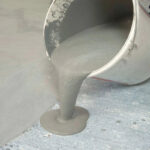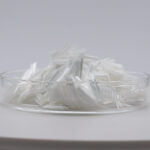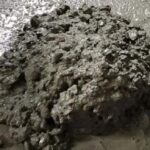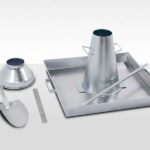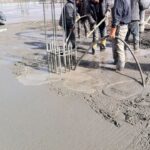This article will discuss the properties of concrete, providing a deep understanding and optimization of these properties. This will help ensure better control over concrete quality, thereby ensuring the stability and reliability of construction projects.
Concept of Concrete
Concrete is made by mixing cement as a binder with sand and gravel as fine and coarse aggregates, along with water. It is widely used and forms the basis for many types of concrete products.
- Concrete, or ordinary concrete, has the following main characteristics:
- It has high compressive strength, typically 20 to 50 MPa, capable of bearing substantial loads.
- Before setting, concrete exhibits good plasticity, allowing it to be molded into various shapes and sizes as needed.
- It is durable, enduring long-term exposure to changes in humidity, temperature, and freeze-thaw cycles without damage.
- Under dry conditions, concrete has a thermal conductivity coefficient of 1.3 kcal/m·h·℃, which is much lower than that of steel, offering some insulation properties.
- Concrete has a density of 2400 kg/m³, requiring larger cross-sectional dimensions compared to steel to support equivalent loads, thus contributing to its weight.
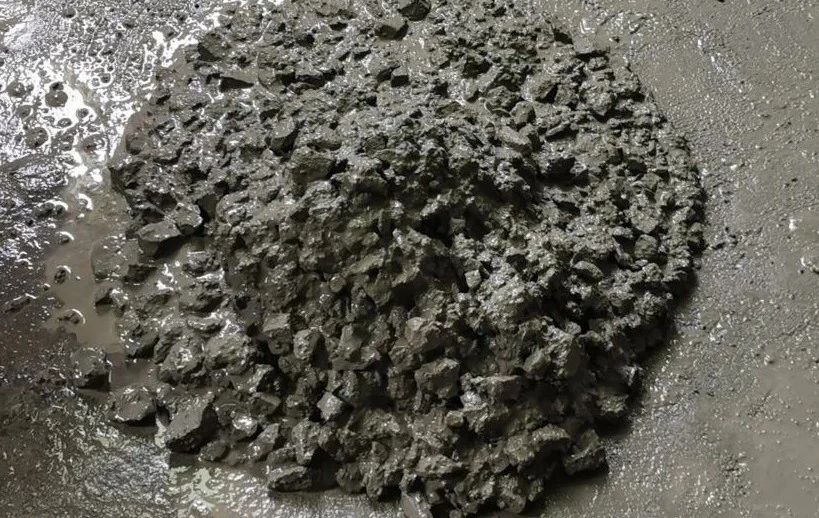
Key Properties of Concrete
- Workability: Refers to the ability of a concrete mix to remain homogeneous and compact during processes like mixing, transportation, pouring, and compaction.
- Flowability: Indicates the ability of freshly mixed concrete to flow under its own weight and external forces, ensuring uniform and dense filling of molds.
- Cohesiveness: Ensures that concrete maintains viscosity and stability during transportation and pouring, preventing segregation and maintaining overall uniformity.
- Water Retention: Refers to the ability of freshly mixed concrete to retain its water content without excessive loss. Good water retention enhances resistance to permeation and ensures stable strength and durability.
Concrete Strength Grades and Selection
Concrete strength grades are defined based on the compressive strength of standard 150 mm cubes cured under specific conditions. Different grades serve unique roles in construction:
- Lower strength grades (e.g., C7.5 to C15) are used for foundations, bases, floors, and areas with minimal stress.
- Medium strength grades (e.g., C20 to C30) are widely used in general reinforced concrete structures like beams, slabs, columns, stairs, and frames.
- Higher strength grades (e.g., above C30) are employed in structures requiring greater strength, such as highways, bridges, and pre-stressed concrete components.
- Very high strength grades (e.g., exceeding C60) are crucial for multi-story buildings, large-span structures, and specialty constructions.
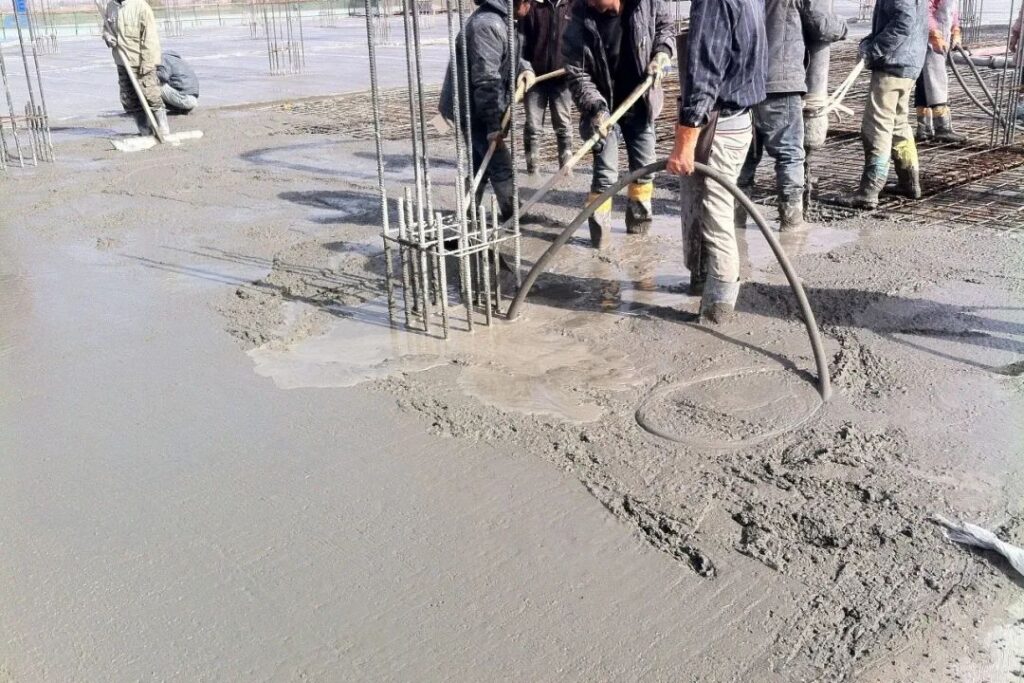
Concrete Mix Proportions
The concrete mix proportions refer to the ratios of cement, sand, gravel, and water used in the mix. These proportions directly affect concrete properties such as strength, durability, and workability, as well as influencing cost efficiency by optimizing cement usage.
Choosing the right concrete mix proportions is essential to meet operational requirements for workability, flowability, strength, durability, and cost-effectiveness in construction projects.
Why Use Admixtures in Concrete?
Admixtures are increasingly used due to the structural and technological advancements in construction projects. Recent developments include high-rise buildings, large-span structures, various new structural systems in cast-in-place concrete, and innovative prefabricated concrete components. Techniques like mass concrete, shotcrete, vacuum dewatered concrete, and slip-form construction have also emerged, demanding concrete with high fluidity, early strength, high strength, rapid setting, slow setting, low heat hydration, freeze-thaw resistance, and impermeability. Admixtures are used to enhance concrete performance, improve project quality, reduce costs, and meet the requirements of new technologies.
Concrete's properties are determined by the proportions of cement, sand, gravel, and water. Adjusting these ratios to enhance one property often compromises another. For example, increasing water content improves concrete's flowability but reduces its strength. Increasing cement content for early strength may escalate costs and lead to shrinkage and creep. Admixtures mitigate these issues by improving specific properties without significant drawbacks in other areas. For instance, adding just 0.2% to 0.3% of calcium lignosulfonate water reducer can double concrete slump without increasing water content. Similarly, incorporating 2% to 4% of sodium gluconate and calcium (NC) complex can increase early concrete strength by 60% to 70% without raising cement content, enhancing both early and later strength.
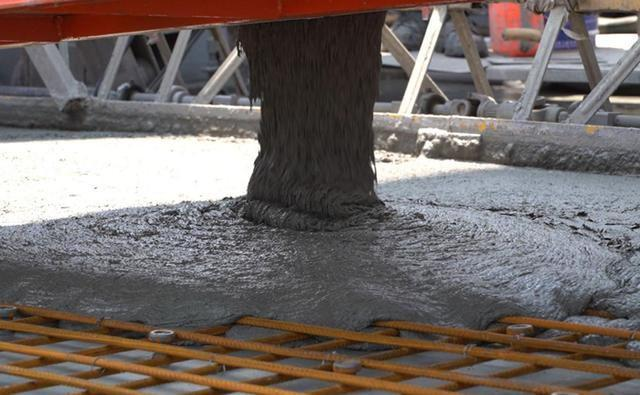
Adaptability of Concrete Admixtures to Cement
- Stability of Cement Minerals: The stability of cement minerals affects the adaptability of concrete admixtures. Factors like cement ore stability and mineral component stability impact admixture performance.
- Cement Production Process: Processes like rotary kilns and cooling measures affect the mineral composition, crystalline phases, and gypsum morphology in cement, thereby influencing admixture adaptability.
- Adsorption Capacity of Cement: Cement's adsorption capacity for admixtures varies with mineral composition (C3A > C4AF > C3S > C2S) and directly affects hydration rates.
- Effect of Storage on Cement: Cement stored over time undergoes changes that affect its adaptability to admixtures. For instance, temperature reduction improves adaptability, enhancing concrete workability and reducing slump loss.
- Impact of Cement Type: Different cement types (e.g., ordinary Portland cement vs. slag cement) affect water demand and water retention capabilities.
- Environmental Conditions: Temperature and humidity directly influence admixture performance with cement in concrete mixtures.
- Aggregate Proportion in Mix Design: Aggregate grading and proportion influence admixture adaptability in concrete.
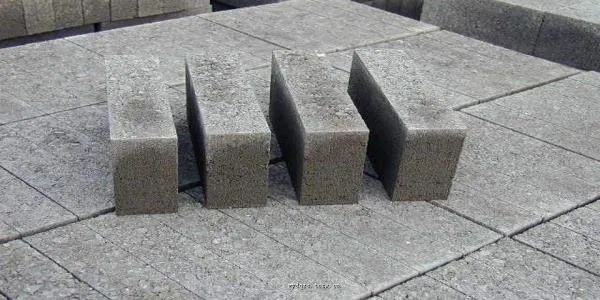
What is Concrete Durability?
Concrete durability refers to its ability, besides adequate strength, to withstand specific environmental conditions and stresses, including freeze-thaw cycles, water and chloride ion penetration, shrinkage, carbonation, steel corrosion, sulfate attack, compression fatigue deformation, and alkali-aggregate reactions. These factors collectively ensure the long-term performance and safety of concrete structures.
- Permeability Resistance (P): Measures concrete's ability to resist liquid and gas penetration. Lower permeability (e.g., P4) indicates higher resistance under specified conditions.
- Freeze-Thaw Resistance (F): Indicates concrete's ability to resist damage from freezing and thawing cycles. Resistance is measured by the reduction in strength after freeze-thaw cycles (e.g., F15, F25).
- Erosion Resistance: Measures concrete's ability to resist erosion from various aggressive liquids and gases.
- Heat Resistance: Refers to concrete's ability to maintain internal structure and strength under high-temperature conditions, demonstrating chemical stability.
Understanding these aspects of concrete durability is crucial for designing structures that withstand environmental challenges and ensure long-term serviceability.


